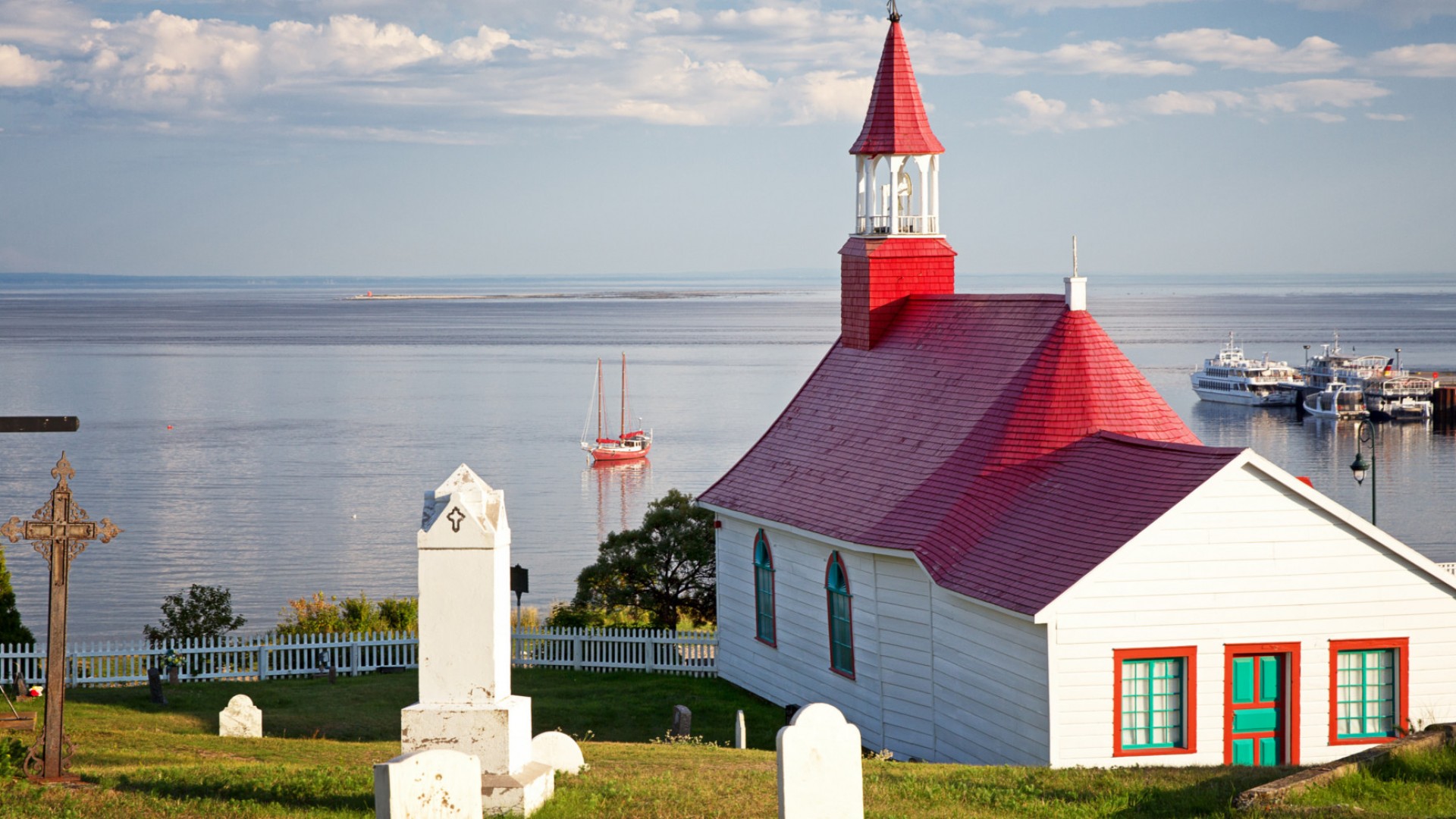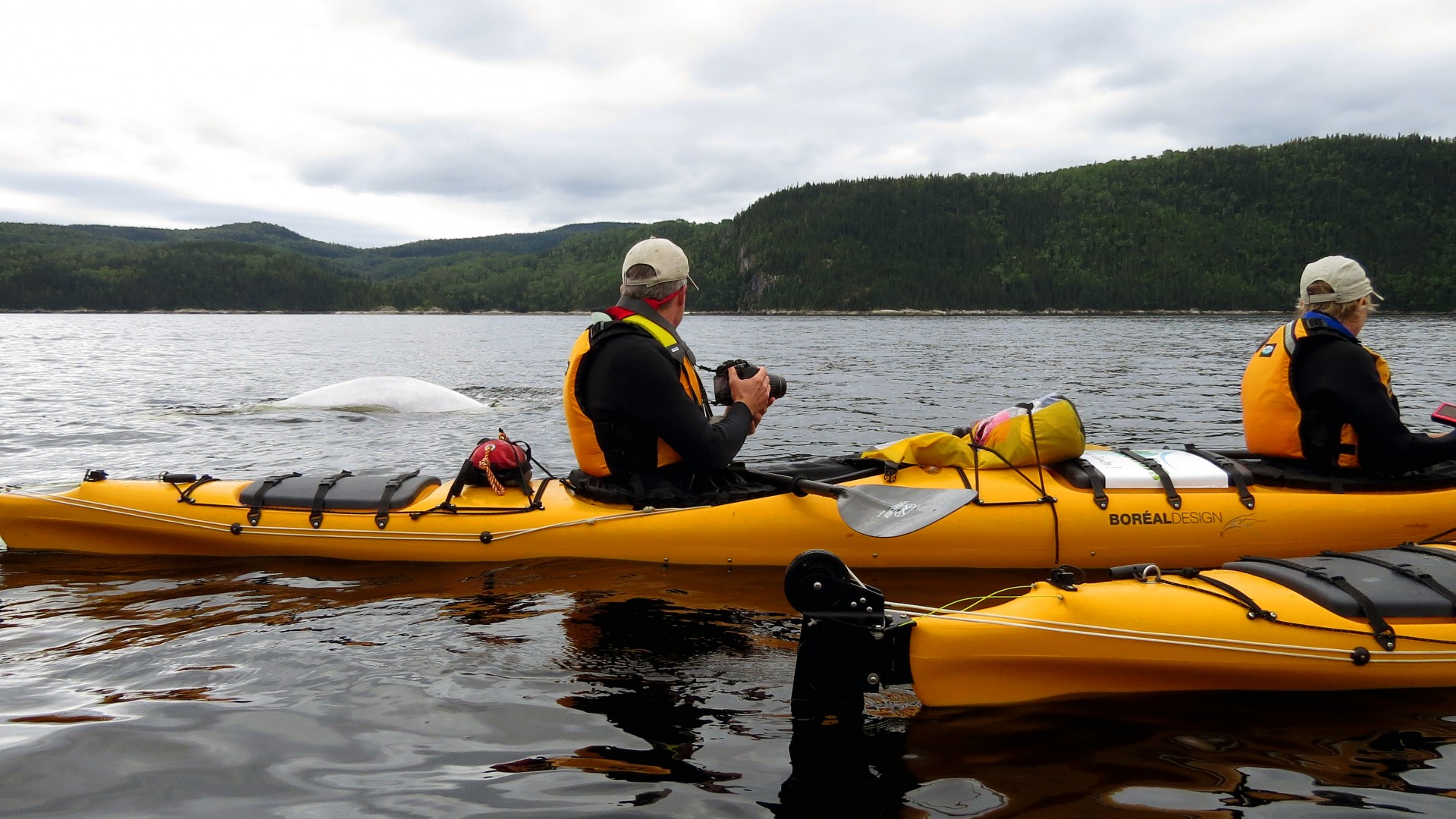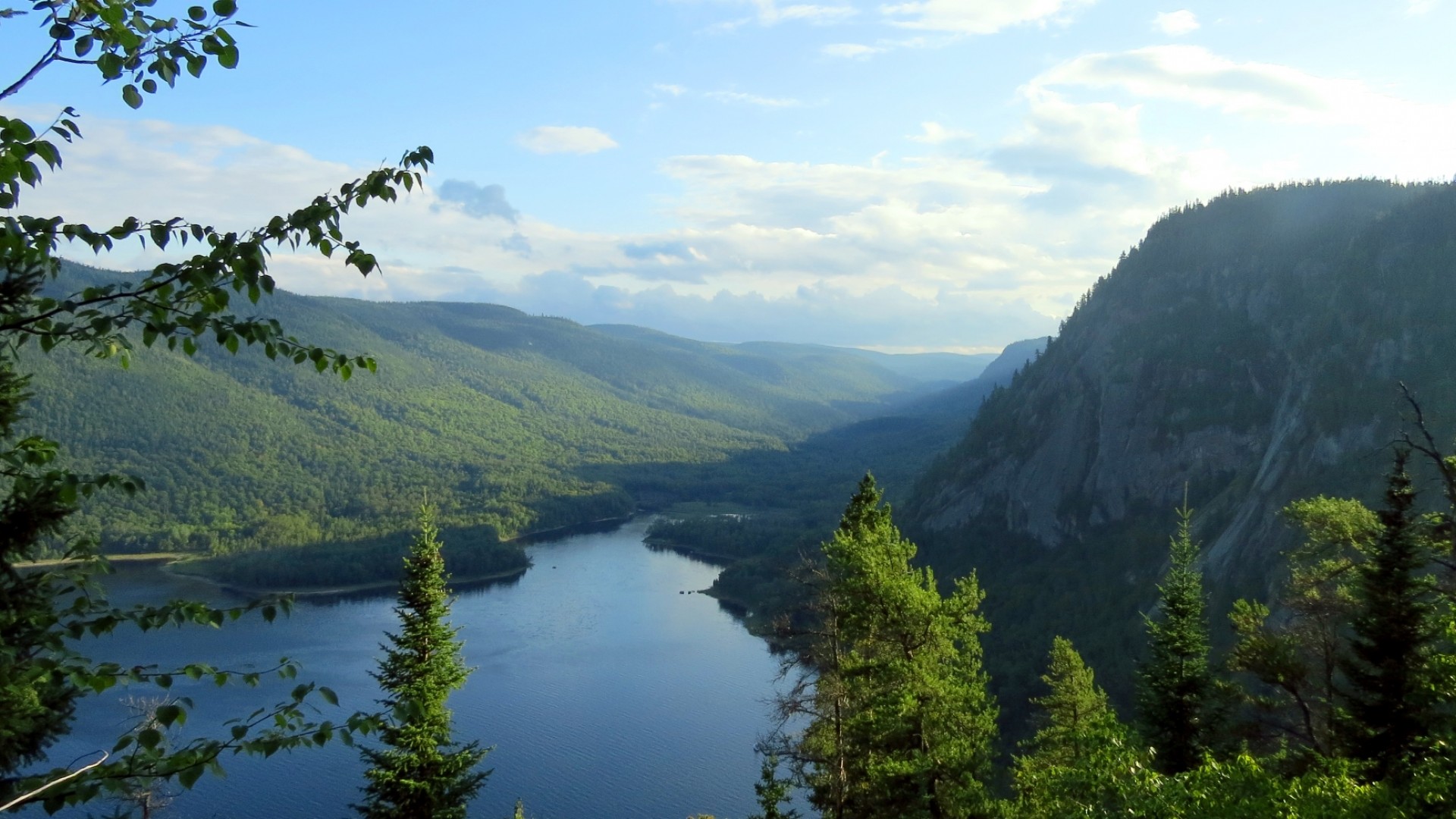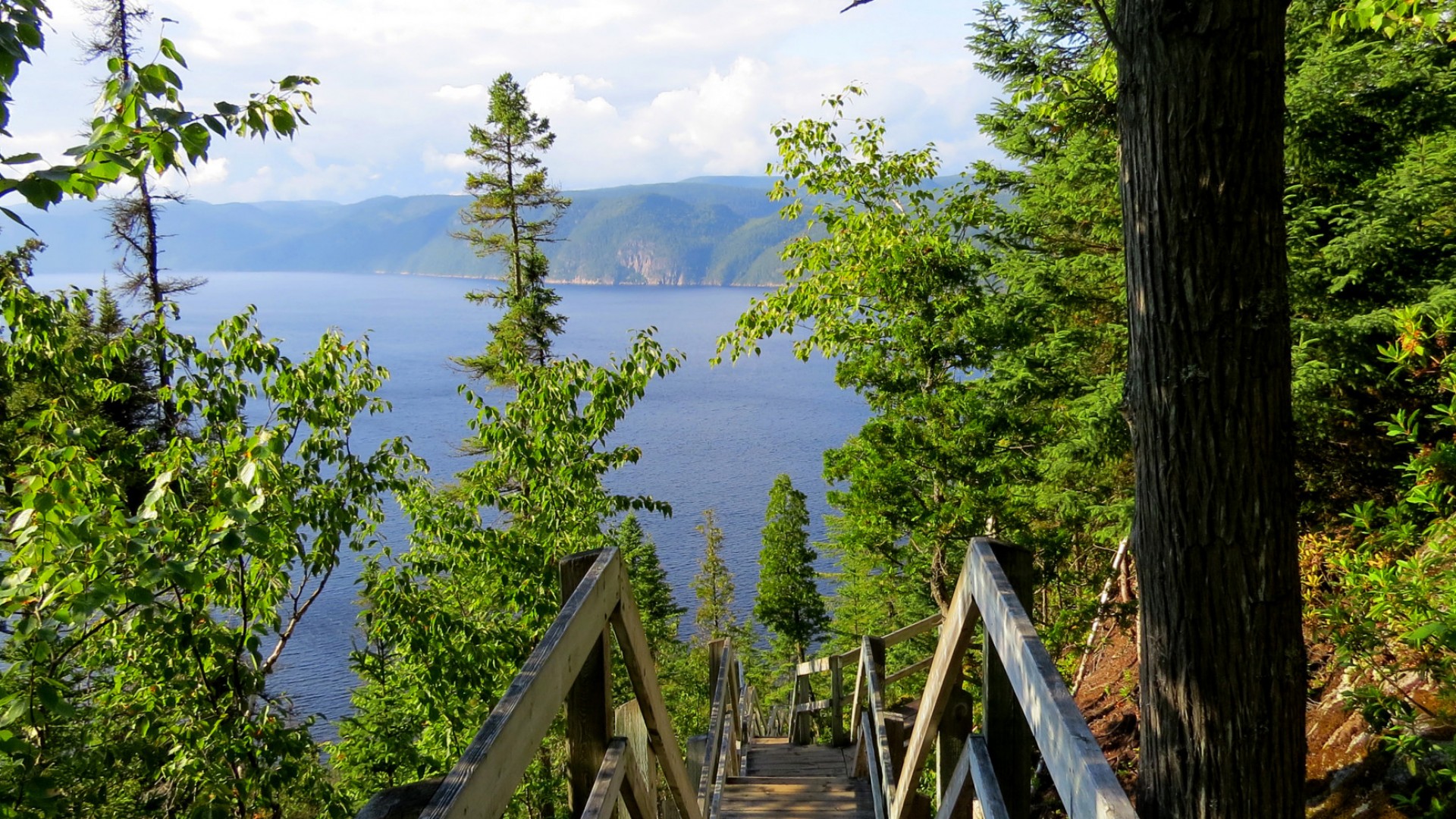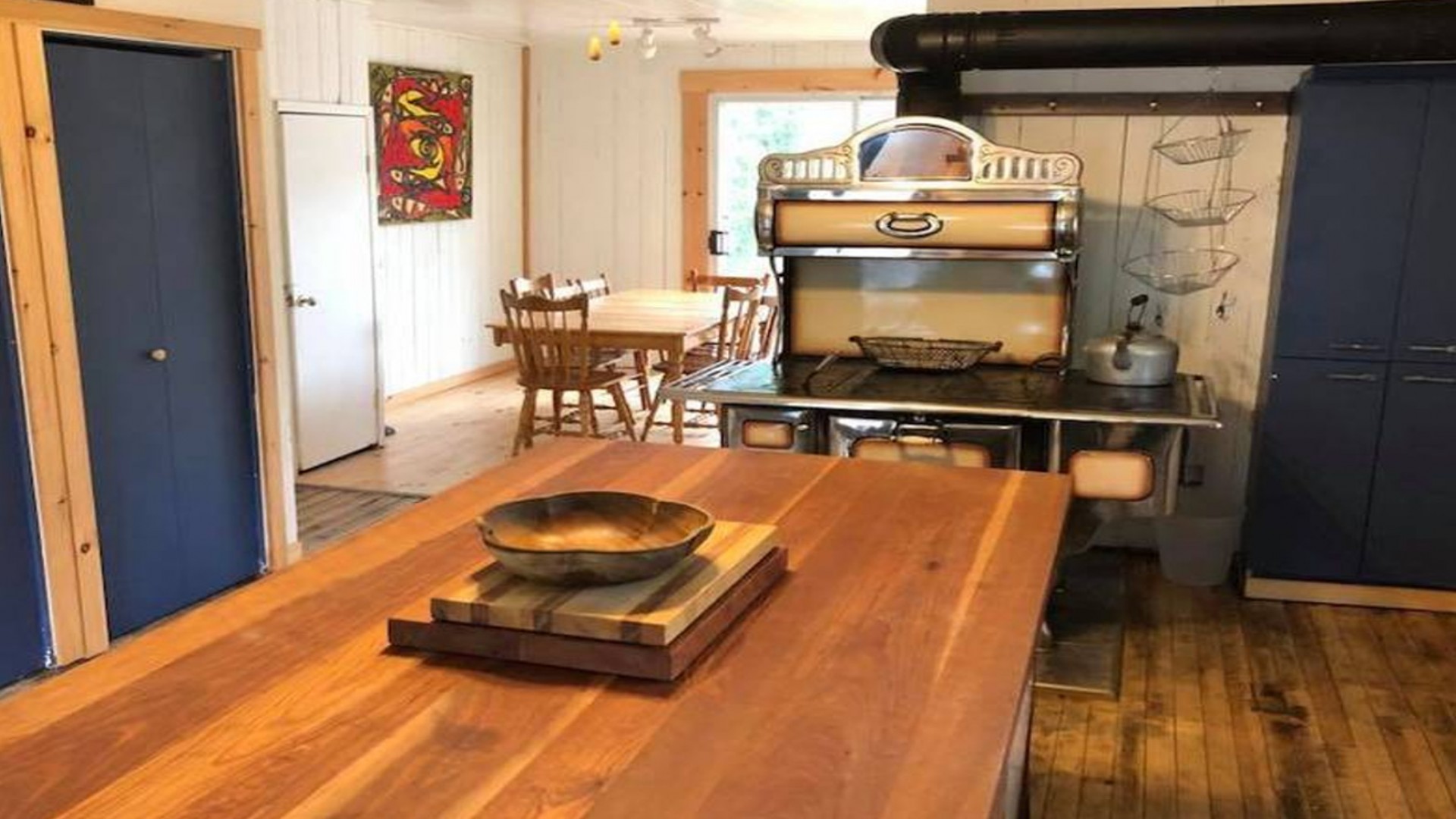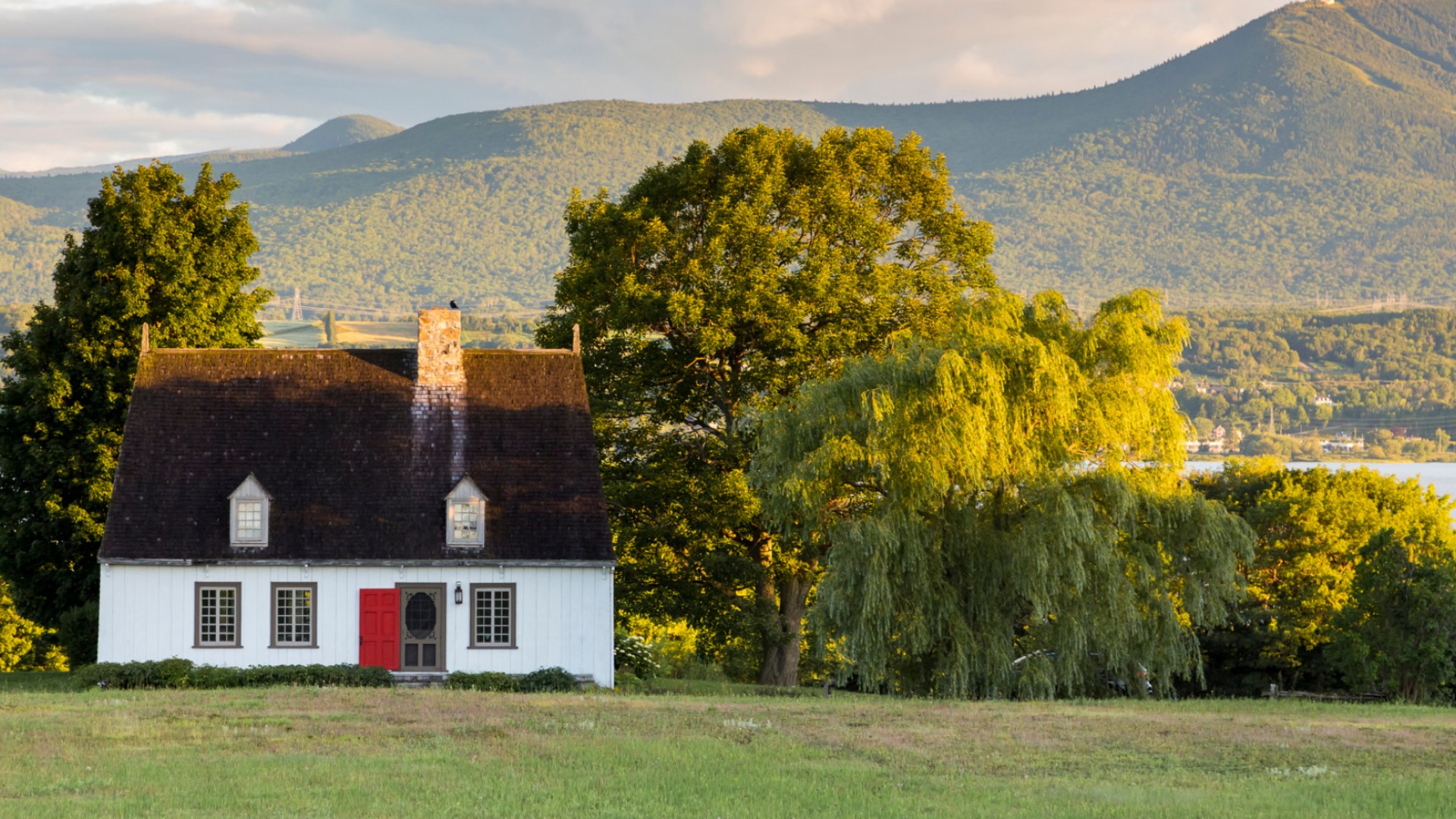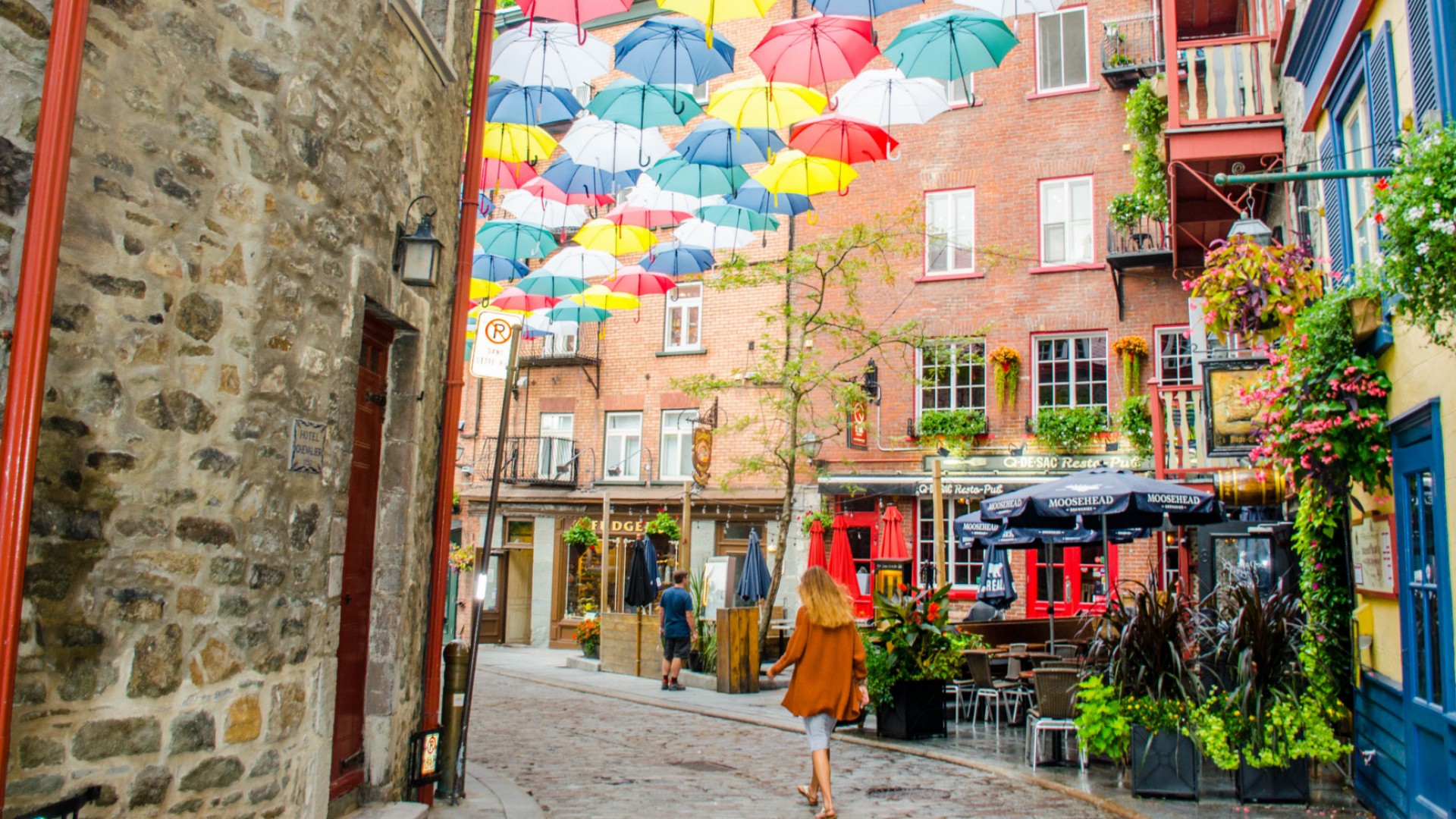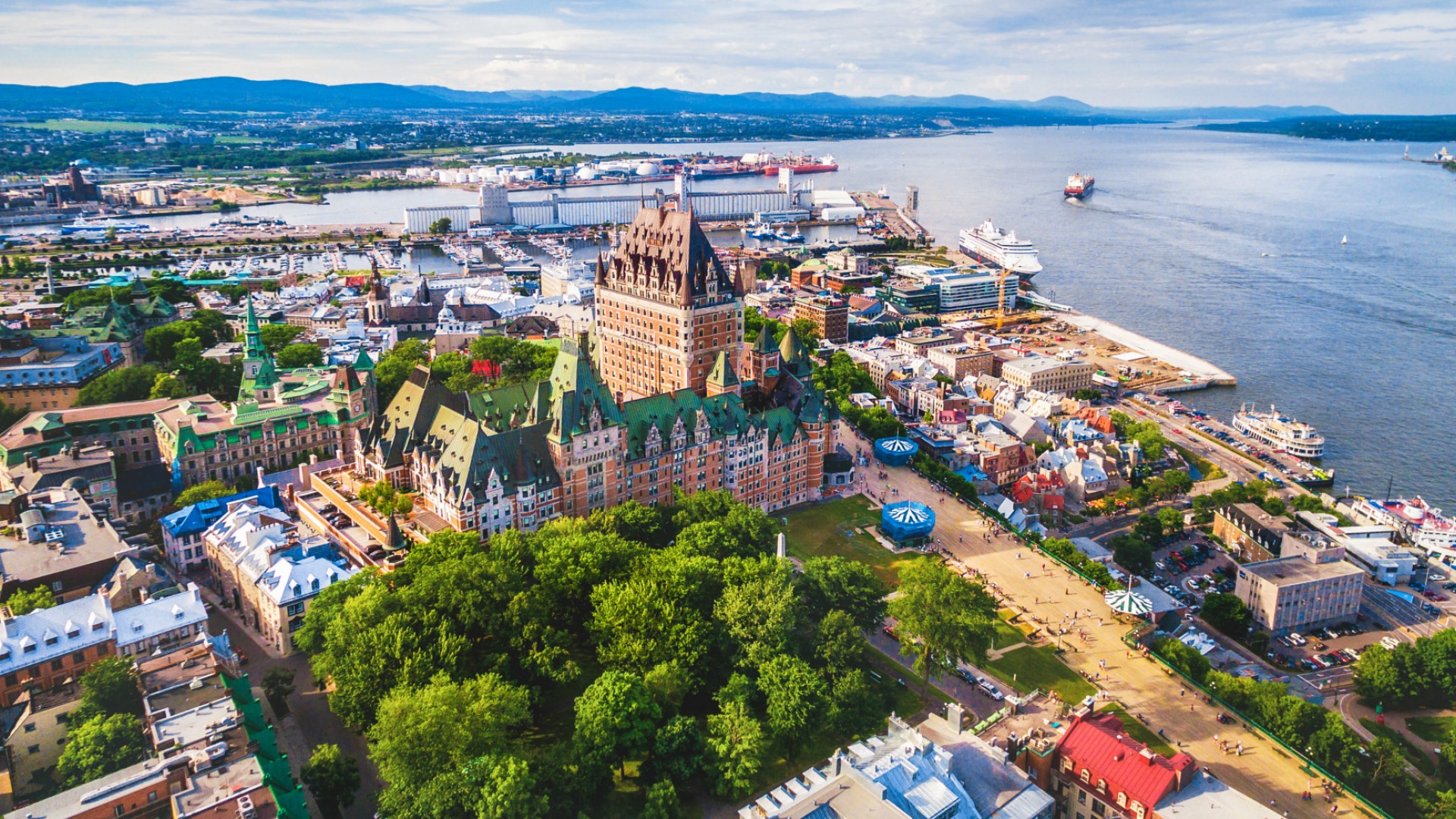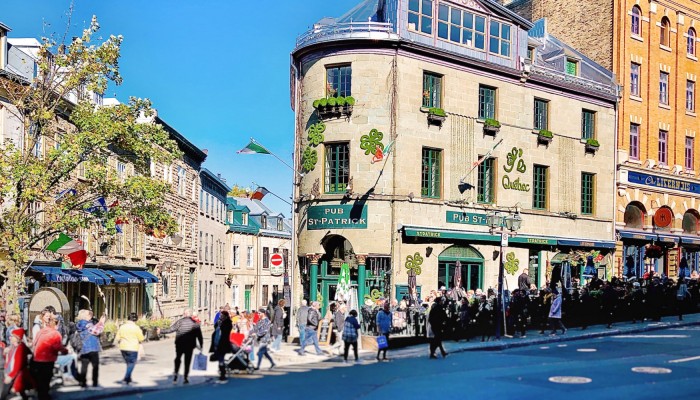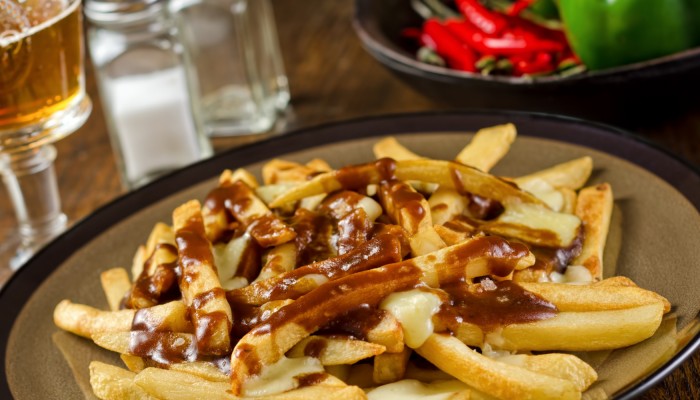Overview
Sea Kayaking, Hiking, and Whale Watching in Quebec
Fusing North American and European cultural influences, French-speaking Quebec is like nowhere else in Canada. It’s home to cosmopolitan cities and vast areas of breathtaking wilderness where black bears, lynx, and moose roam free. The province’s history of fur trading and hunting has played an important role in shaping modern-day Quebec while leaving an enduring legacy on its regional gastronomy.
Beyond the bright lights of Montréal and Québec City, you’ll find the rugged coastlines of the Gaspé Peninsula and the vast tundra of the Côte-Nord, together with the stunning landscapes of the Saguenay Fjord. Our tours to Quebec combine hiking, kayaking, and wildlife watching in this majestic corner of Canada, including up-close encounters with harbor seals, peregrine falcons and beluga whales.
Our Trips
Custom Tours in Quebec
Image & Video Gallery
Country Guide

History
The first humans to establish themselves in what is now known as Quebec are believed to have arrived around 11,000 years ago after the melting of the Laurentide Ice Sheet. Over time, various ethnocultural groups emerged, including the Inuit, the Abenakis, the Algonquins, the Attikameks, the Cree, the Huron-Wendat, the Wolastoqiyik, the Micmacs, the Iroquois, the Innu, and the Naskapis. When Europeans began exploring the region, these various groups were observed hunting, gathering, and fishing while trading and sometimes warring with each other.
The first confirmed contact with Europeans occurred in the 10th century when the Icelandic Viking Leif Erikson sailed the coast of Canada. The Spanish and Portuguese, followed by the English and French, eventually arrived in the 15th and 16th centuries in search of a new sea route to the Far East. In the 1520s, King Francis I of France commissioned an expedition to find the Northwest Passage, with the Italian navigator, Giovanni da Verrazzano at the helm. Although unsuccessful, it was this expedition that led to North America’s northeast being named “New France”.
Jacques Cartier was the first European explorer to map Quebec in 1534 and it was during his second expedition that he renamed the surrounding territories, Canada. He chose the name after hearing two local Iroquois use the word “kanata” (meaning “village”) and the term was quickly adopted by European cartographers.
Interest in North America was ignited around 1580 when the fur trade became important to Europe and the French returned looking for beavers. Quickly, New France became a colonial trading post, with the trade of furs in Pays-d’en-Haut the main activity. A permanent trading post was founded in Tadoussac in 1600 and, three years later, Samuel de Champlain traveled down the Saint Lawrence River. He was on a mission to establish a defense pact with some of the indigenous peoples against attacks and invasions by the Iroquois in what would later become known as the Beaver Wars.
In 1629, Quebec was surrendered to the English privateers but just three years later, the English king agreed to return the lands if Louis XIII paid for his wife’s dowry. Trois-Rivieres was founded at the mouth of the Saint-Maurice River in 1634 and Ville-Marie (now Montreal) was established in 1642 on an island to protect it against Iroquois invasions.
New France was officially designated as a royal province in 1663 and was settled by mostly farming French who became known as “Canadiens”. High birth rates saw the colony grow rapidly, helped along by the arrival of around 800 young French women to redress the gender imbalance.
The Beaver Wars came to an end in the early 1700s when the Great Peace of Montreal was signed, although competition between the French and British empires to control the fur trade continued. Known as the Intercolonial Wars, these included the Battle of Quebec and the War of the Conquest, which lasted from 1754 to 1763.
After the British took over Canada, the Canadiens were restricted to what was known as the Province of Quebec and unrest in the colonies caused concern that they would support the growing rebellion. To ensure the Canadiens’ allegiance to the British crown, they were allowed to regain their civil customs and return to the seigneurial system as part of the Quebec Act of 1774.
In 1791, the Constitutional Act saw the Province of Quebec divided into two distinct colonies - Upper Canada to the west and Lower Canada to the east. This allowed the Anglo-Protestant Loyalists from the United States to live under British laws while the Canadiens maintained French civil law and Catholic traditions.
During the War of 1812, the victory of Canadian troops at the Battle of Chateauguay resulted in the Americans abandoning their Saint Lawrence Campaign to conquer Canada. Less than 30 years later, the Act of Union was passed to merge Upper and Lower Canada into a single colony, with francophone Lower Canada more densely populated than anglophone Upper Canada. Eventually, the British immigrants began referring to themselves as “English Canadians” and the “Old Canadians” used the term “French Canadians”.
When World War I broke out, many English Canadians who felt a connection to the British Empire volunteered to enlist while most French Canadians didn’t see a reason to fight. They were also against conscription when World War II arrived, although many English Canadians were in favor. These differences in values led to protests and popularized the expression “Two Solitudes”.
World War II was followed by a period of intense modernization and secularization that came to be known as the Quiet Revolution. Many French Canadians began expressing their concern in regards to their inferior socioeconomic position and with the cultural assimilation that was taking place. Eventually, this led to the emergence of the modern Québécois identity and in 1977, the Charter of the French Language came into effect, helping to strengthen the rights of Quebecois.

Wildlife of Quebec
Quebec’s diverse habitats support a variety of wildlife species that are protected by the Wildlife Foundation of Quebec and the Data Centre on Natural Heritage of Quebec. In addition to white-tailed deer, moose, and caribou, its large, land-dwelling species include cougars, bobcats, and Arctic fox. Eastern grey squirrels, chipmunks, and raccoons can also be spotted in many of the province’s protected areas, as can groundhogs and Canadian beavers.
Also worth noting are “Quebec heritage breeds”, which include Canadian horses, cows, and Chantecler chickens. The first Quebec product to be legally protected based on its region of origin is Charlevoix lamb, which is raised around 400 kilometers northwest of Montreal.
Blue whales, minkes, and belugas are known to travel up the Saint Lawrence River while the province’s northerly reaches are home to walruses and narwhals. A huge diversity of fish species inhabit Quebec’s inland waters, including Arctic char, Atlantic cod, and largemouth bass.
When it comes to birdlife, Quebec is home to large birds of prey such as golden eagles and peregrine falcons, as well as blue jays, black-capped chickadees, and red-winged blackbirds. In terms of aquatic avian species, you should keep your eyes peeled for Canada goose, double-crested cormorants, and great blue herons.
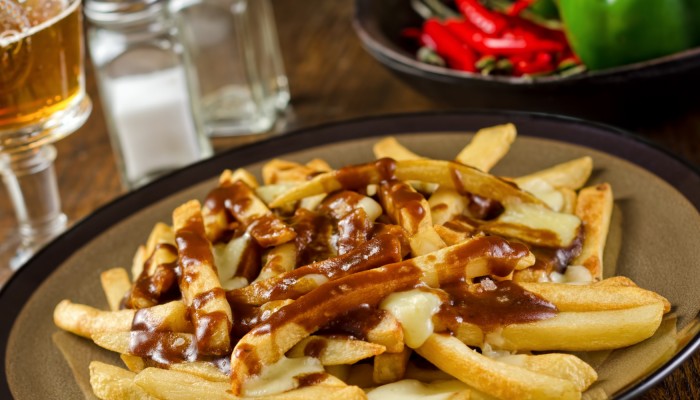
Cuisine in Quebec
Quebec’s unique cuisine is largely influenced by the French dishes that were brought by 16th-century settlers while featuring elements adopted from American, British, and First Nations people. Waves of migrants have also left their mark on the region, resulting in a gastronomic melting pot that’s a feast for the taste buds. It’s highly impacted by the seasonality of ingredients (most notably Quebec’s harsh winters) and the labor-intensive nature of colonial life.
Don’t miss the opportunity to try Quebec’s signature dish, poutine, which combines fries, gravy, and cheese curds. Bagels are a staple on the streets of Montreal, as are local shawarmas known as shish taouk that are filled with marinated chicken and pickled vegetables. One of Quebec City’s specialties is the meat-filled pie of tourtière while Charlevoix lamb is now legally protected in the same way that champagne is. Similar to an English shepherd’s pie is pâté chinois while fèves au lard features slow-cooked beans mixed with bacon and molasses. Quebec is also recognized for its wide range of cheeses, which can be sampled along the Route des Fromages.
If you’re visiting in the spring, be sure to go to a sugar shack to sample the locally sourced maple syrup, which is a seasonal tradition in Quebec. In fact, Quebec is the biggest producer of maple syrup in the world, with around 72% originating from the province. Keep an eye out for grands-pères, a pastry that’s drenched in maple syrup, as well as pouding chômeur, a pudding that was created by female factory workers during the Great Depression.
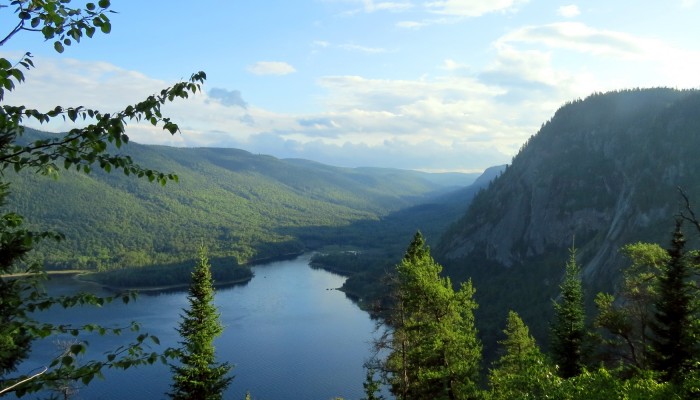
Geography of Quebec
Sprawling across a territory nearly three times the size of France, Quebec is a sparsely populated province in Canada’s east. Southern Quebec is home to the Great Lakes-St. Lawrence Lowlands and the Appalachians while northern and central Quebec is dominated by the Canadian Shield. At Quebec’s highest point is Mont d’Iberville (5,420 feet), which lies on the province’s border with Newfoundland and Labrador.
More than half a million lakes dot the territory while 4,500 rivers empty into the Atlantic and Arctic Oceans. The most important of these is the Saint Lawrence River, which accesses the ports of Montreal, Trois-Rivieres, and Quebec City and served as a base for explorations in the 17th and 18th centuries.
The Great Lakes-St. Lawrence Lowlands sprawl along the shores of the Saint Lawrence River and the forested islands of the Gulf of St. Lawrence. Predominantly low-lying and flat, the lowlands are believed to have formed around 100 million years ago and are prone to infrequent earthquakes. Much of the region’s rural landscapes are divided into rectangular tracts that date back to 17th-century settlement while the forests provide a springtime crop of maple syrup.
Shaped by glaciers over successive ice ages is the Canadian Shield, which dominates more than 95% of Quebec’s territory. It features lakes, bogs, streams, and rivers, as well as deposits of glacial boulders, gravel, and sand. The Laurentian Plateau covers the Labrador Peninsula, which features flat Arctic tundra and boreal forests dominated by spruce, fir, and poplar. Along the southeastern border of Quebec stretch the Appalachians where you’ll find some of the province’s highest peaks.
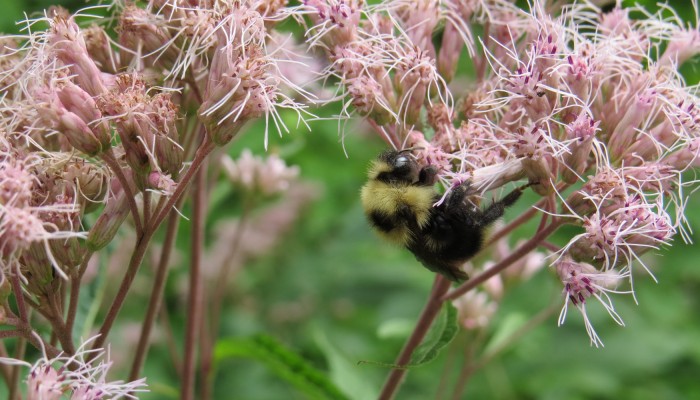
Flora of Quebec
From its northern tundra to the deciduous forests of the south, Quebec boasts a diverse flora that is influenced by the underlying terrain and climactic conditions. Sprawling along the edge of Ungava Bay and Hudson Strait is the tundra, which covers around a quarter of Quebec’s territory. Further south lies the less-arid taiga and Canadian boreal forest, an area of coniferous forests, wetlands, bogs, and fens. The Canadian Boreal Forest encompasses around 27% of Quebec, with around 850 different plant species having been recorded here.
Transitioning between the Canadian boreal forest and the deciduous forest is an area of mixed forest, which has a high number of plant species due to its diverse habitats. It dominates large areas of the Laurentians, the Appalachians, and the lowland areas. More than 1,600 plant species have been recorded in Quebec’s deciduous forests and the area’s long growing season and fertile soils make it the main area of agricultural activity. Jackpine, spruce, and tamarack dominate the forest in some parts while maples, white ash, and American beech can be found in the Great Lakes-St. Lawrence Lowlands.
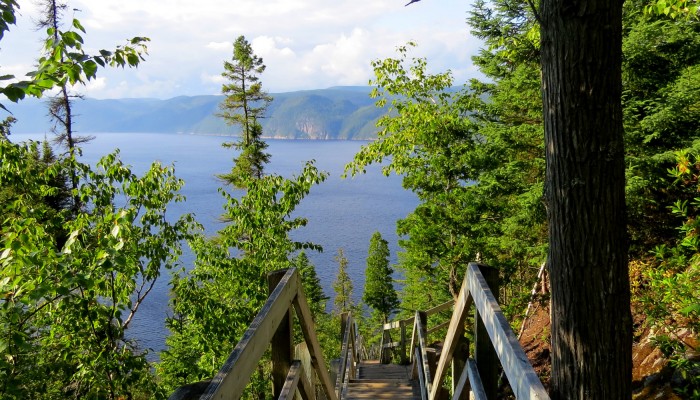
Conservation in Quebec
As Canada’s largest province, Quebec is home to an abundance of protected areas that are managed at a federal, provincial, and municipal level. Managed by Parks Canada is Forillon National Park on the outer tip of the Gaspe Peninsula and Le Mauricie National Park in the rugged Laurentian Mountains. Quebec is also home to Mingan Archipelago National Park Reserve on the north shore of the Gulf of St. Lawrence and the National Marine Conservation Area of Saguenay-St. Lawrence Marine Park.
Provincial parks are managed by the Société des établissements de plein air du Québec, which is known locally as Sépaq. These parks include Anticosti National Park, Bic National Park and Île-Bonaventure-et-du-Rocher-Percé National Park, to name just a few. The Ministry of Sustainable Development, Environment, and Parks also manages a long list of ecological, biodiversity, and aquatic reserves throughout the province and there are plenty of regional parks that are managed at a municipal level.
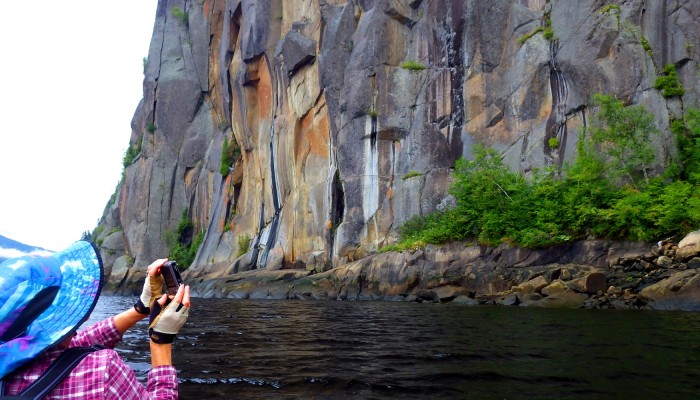
Geology in Quebec
Around 90% of Quebec’s bedrock is comprised of Precambrian rocks that form part of the immense Canadian Shield. In contrast, the Saint Lawrence Lowlands and the Appalachians consist primarily of Paleozoic rocks.
Quebec can be divided into seven main geological provinces: Superior, Nain, Churchill, Grenville, Appalachian, St. Lawrence Platform, and Hudson Bay Platform. The Superior Province covers half of Quebec and is known for its gold, copper, zinc, and silver deposits while the Nain Province in Labrador is composed of Archean metamorphic rocks.
In the northern part of Quebec is the Churchill Province, which has nickel-copper and iron deposits. Iron is also a feature of the Grenville Province while copper is found in the Appalachian Province. Both the St. Lawrence Platform and the Hudson Bay Platform are characterized by Paleozoic sedimentary rocks and large niobium deposits.
Travel Essentials

Money in Quebec
Quebec Currency
Quebec uses the Canadian dollar (CAD) as its currency. Banknotes are available in $100, $50, $20, $10, and $5 denominations while coins come in $2, $1, 25¢, 10¢, and 5¢.
Exchange Rates
$1USD is equal to around $1.26CAD at the time of writing (August 2021)
Some businesses in Quebec will accept US Dollars but the exchange rates are usually unfavorable.
ATMs and Credit Cards
ATMs are widely available throughout Quebec and most banks are open from 9:00 to 17:00 Monday to Friday. Banks usually have foreign currency exchange services but withdrawing Canadian dollars directly from an ATM is more convenient.
Credit and debit cards are the most popular means of payment at hotels, retail stores, and restaurants, although it’s a good idea to carry some Canadian dollars in cash if you are visiting more remote areas.
Before you leave home, check with your bank regarding withdrawal limits and any fees that may be charged for using your card at international ATMs.

Health & Safety in Quebec
Inoculations
While there are no compulsory immunizations for travel to Quebec, the Center for Disease Control and Prevention (CDC) advises that travelers are up-to-date on their routine vaccinations before visiting. This includes tetanus, hepatitis A, hepatitis B, Diptheria, and typhoid, as well as measles, mumps, and rubella.
Safety
Quebec is generally a safe province to explore, although there are parts of Montreal and Quebec City that are prone to petty crime. When renting a car, it’s highly recommended that you don’t leave valuables inside your vehicle and always lock the doors when leaving it parked in public areas.
Travel Insurance
Travel insurance is not compulsory to visit Quebec but it is highly recommended in case the unexpected happens. Before purchasing a policy, carefully check what it does and doesn’t include to ensure you are covered for all planned activities and events.

Entry Requirements in Quebec
Visas are not required to enter Canada for citizens of most European countries, the United States, Australia, and New Zealand, although you need to apply for an Electronic Travel Authorization if flying into or transiting through a Canadian airport. You will also need a passport with at least six months validity and two free pages for entry and exit stamps.

Internet & Phone Service in Quebec
Phones
If you plan on using your mobile phone in Quebec, check with your cell provider before leaving home in regards to international data roaming charges. Alternatively, you can purchase an affordable kit with a prepaid SIM card on arrival to keep costs down. Travelers with unlocked and compatible phones may also opt to buy a pay-as-you-go SIM on arrival in Canada to use with their existing phone.
Internet
Most accommodation providers in Quebec offer complimentary Wi-Fi access, except in some remote areas. Cafes and restaurants may also have internet available to customers, so check with staff on arrival.
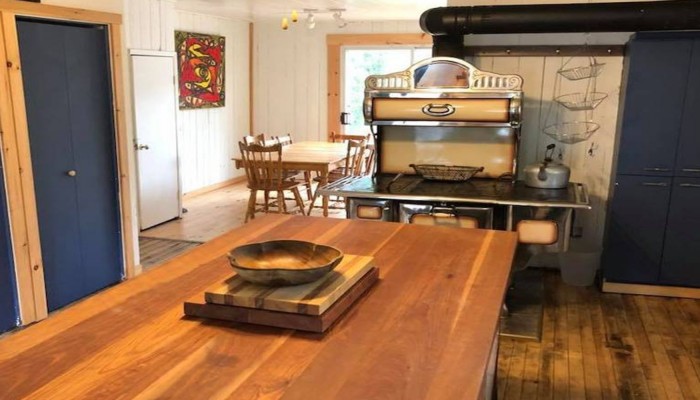
Power in Quebec
Quebec’s electricity is supplied at 110 volts, with both Type A (two-pronged flat plugs) and Type B (plugs with two flat parallel pins and a grounding pin) used.

Getting to Quebec
Montreal-Pierre Elliott Trudeau International Airport and Quebec City Jean Lesage International Airport are the main aviation gateways to Quebec and have flights to destinations across North America. Montreal-Pierre Elliott Trudeau International Airport is the larger of the two and has a wider choice of flights to major European cities, the Middle East, and select African cities.
Both Montreal and Quebec City are connected to Toronto and Ottawa via fast and efficient rail services and trains also travel south to New York City via Philadelphia, Baltimore, and Washington, D.C. Greyhound Canada runs long-distance bus services throughout the country and into the United States.
Meet Our Guides

Simon-Olivier Côté
Quebec Adventure Guide
While Simon-Olivier Côté was born in northern Québec’s city of Saint-Félicien, his work and passion for adventure has lead him all over the world. Before continuing with his studies in geography, Simon-Olivier took the opportunity to travel the world—backpacking through 25 countries on his own. Even when he wasn’t living the life of the nomadic adventurer, he immersed himself in new cultures. He lived abroad for four years while he continued his studies in Brazil and traveled throughout the U.S. and Asia as a French instructor. After Simon-Olivier completed his Master’s degree in Sustainable Development and Dynamics of Territories and Societies, he made his way back to Québec. There, he founded a tourism cooperative that took off in 2006 centered around travel within the northern Québec region. As the cooperative continued to grow, Simon-Olivier worked with one of his co-op partners to develop an adventure tourism branch with the objective to elevate the quality standards for adventure travel throughout the Saguenay region. He and his partner ultimately consolidated their services and formed a company specializing in kayak and canoe expeditions trips . Simon-Olivier currently works as the international marketing manager for his company as well as serving as a city counselor for Saguenay. He is passionate about geomorphology, history, and people. He hopes to provide you with the best possible experience exploring northern Québec and the wild beauty of the Saguenay Fjord.
FAQ's
What immunizations are recommended or required in Quebec?
There are no mandatory immunizations for travel to Quebec. However, the Center for Disease Control and Prevention (CDC) advises that travelers are up-to-date on their routine vaccinations before visiting. This includes tetanus, hepatitis A, hepatitis B, diptheria, and typhoid, as well as measles, mumps, and rubella.
Can I drink the water in Quebec?
Quebec has high-quality drinking water that is safe to drink and the province experiences fewer water problems compared to other parts of Canada. Restaurants are required to maintain high hygiene standards when it comes to food preparation, so there shouldn’t be any issues eating raw vegetables or peeled fruit.
What type of Currency is used in Quebec? Exchange Rate? Are US dollars accepted?
In Quebec, the currency is the Canadian dollar, with $1USD equal to around $1.25CAD at the time of writing. Banknotes are available in $100, $50, $20, $10, and $5 denominations while the most frequently used coins are $2, $1, 25¢, 10¢, and 5¢.
Some businesses in Quebec will accept US Dollars but the exchange rates are variable and, in most cases, aren’t favorable. Throughout Canada, credit and debit cards are the most popular means of payment at hotels, retail stores, and restaurants, although businesses in some of the more remote areas still prefer cash. It’s a good idea to carry some Canadian dollars with you at all times.
While you can easily exchange foreign currencies at most banks, withdrawing Canadian dollars at ATMs is even easier. ATMs are widely available throughout Quebec and banks are generally open from 9:00 to 17:00 Monday to Friday.
What time zone is Quebec in?
Quebec operates on Eastern Standard Time (GMT-5) and daylight savings time is observed from early March to early November. There are a few locations in the province, such as Blanc-Sablon, that don’t observe daylight savings time.
What is the official language of Quebec?
French is the official language of Quebec, although around 40% of Quebec's French-speaking population is also fluent in English. In the cities, you’ll find a higher percentage of bilingual people than in the more rural areas where some French may be required for getting around.
Do I need a visa or passport to travel to Quebec?
To enter Canada, you will need a passport with at least six months validity and two free pages for entry and exit stamps. Visas are not required to enter the country for citizens of most European countries, the United States, Canada, Australia, and New Zealand. However, you do need to apply for an Electronic Travel Authorization if flying into or transiting through a Canadian airport.
Do I need travel insurance?
While it’s not compulsory to take out travel insurance to visit Quebec, it’s highly recommended that you do to cover yourself in case the unexpected happens. Take time to compare policies that cover in-country medical expenses, theft, and transportation delays, and be sure to check if there are any activities or events that are excluded.
What is the best way to get around once I'm there?
Due to its sheer size, air travel is one of the fastest and most convenient ways of getting around Quebec. Domestic flights connect both Quebec City and Montreal to remote regions (some of which are inaccessible by road) and are a particularly good option for accessing the Basse-Côte-Nord or Îles de la Madeleine.
Traveling by train is a scenic alternative to air travel, although Quebec’s rail network isn’t as extensive as European travelers might be accustomed to. The route between Montreal and Quebec City is the most popular one, although you can also find trains connecting to Saguenay, Senneterre, and La Tuque. From May to October, the Train de Charlevoix offers stunning views across the St. Lawrence River and the surrounding mountains on its journey from Quebec City to Baie-Saint-Paul.
There are also several bus companies that offer intercity routes to towns and destinations that are not covered by train. In Quebec City and Montreal, the public transport services are extensive, comprising buses, commuter trains, and subways.
Hiring a car is another option for getting around the sprawling province, with around 325,000 kilometers of road to explore. Quebec recognizes driver’s licenses from French and English-speaking countries but you’ll need to obtain an international driving permit if your license is in another language. Motorcycle touring is also popular, although it’s forbidden to ride a motorcycle between December 15 and March 15 for safety reasons. Vehicles can easily be rented from international companies at Quebec’s major airports.
When are the best times to visit Quebec?
The best time to visit Quebec is generally considered to be from June through to September when the weather is at its warmest, making it ideal for being outside exploring. That being said, the Quebecois also love the icy winter months when festivals illuminate the dark. Spring heralds in the maple syrup season while fall is spectacular across parts of the province for its colorful foliage.
What kind of adapters will I need for my electronics?
As in the rest of Canada, Quebec’s electricity is supplied at 110 volts. Both Type A (two-pronged flat plugs) and Type B (plugs with two flat parallel pins and a grounding pin) are used.
How much should I tip in Quebec?
Tipping is a standard practice throughout Canada, including in Quebec, although many in the service industry earn a higher minimum wage than in the United States. Tipping around 15-20% of the bill is standard in restaurants while bar staff are usually tipped $1 per drink. For hotel staff, $1 or $2 per bag is standard for porters and cleaners usually receive $2-5 a day. If you’re using taxis, it’s customary to tip between 10% and 15% of the fare.
Is travel to Quebec safe?
Quebec is generally a very safe province to travel around, with the only exception being certain neighborhoods in Montreal and Quebec City where petty crime can be an issue. If you’re renting a car, it’s best not to leave valuables visible and always keep the doors locked whenever you’re leaving the vehicle.
Are there cultural sensitivities I should be aware of?
While Quebec is part of Canada, you’ll see far fewer maple flags flying here and the issue of sovereignty is a sensitive one. It’s respectful to refer to locals as Quebecers or Quebecois (rather than French-Canadians) and being able to speak a few words of French is appreciated, even if the other person understands English. They are more likely to be willing to switch to English if you have made an attempt to first speak French. That being said, it can come across as condescending if visitors compliment a Quebecer on their English.
Up until the Quiet Revolution of the 1960s, Quebec was a Roman Catholic province but many people are now atheist or agnostic. Today, it has one of the highest percentages of unmarried couples in the world and you shouldn’t assume that couples are officially wed. It’s also inappropriate to make jokes about “illegitimate” children or starting a family out of wedlock.
What is the food like? Any special dishes or local delicacies I should try?
Originating from 16th-century French cuisine, Quebec’s culinary traditions also draw on influences from First Nations, British and American cuisine. The rareness or seasonality of ingredients has impacted the dishes we know as being quintessentially Quebec, as has the introduction of cuisines by waves of migrants to the region.
One of the province's signature dishes is poutine - fries, gravy, and cheese curds that are served both traditionally and in more gourmet versions. In Montreal, you can’t miss the opportunity to eat bagels, which are smaller and denser than those found in New York. The city is also renowned for smoked meat sandwiches and shish taouk, a locally-inspired shawarma featuring marinated chicken with pickled vegetables and hummus. As one of the world’s largest Francophone cities, Montreal is also settled by large communities from Haiti and North Africa who have brought with them tassot (jerked goat or beef) and couscous respectively.
In Quebec City, look out for tourtière, a meat pie that’s filled with either minced pork, beef, or wild game. The province is also well known for its cheeses, which can be enjoyed along the Route des Fromages. Just over a decade ago, Charlevoix lamb became legally protected and is a “must” for meat lovers. Quebec is also famed for its maple syrup and visiting a sugar shack during the spring is a beloved past-time of locals. Be sure to try tire sur la neige, a taffy that’s created by pouring hot maple sap directly onto the fresh snow.







